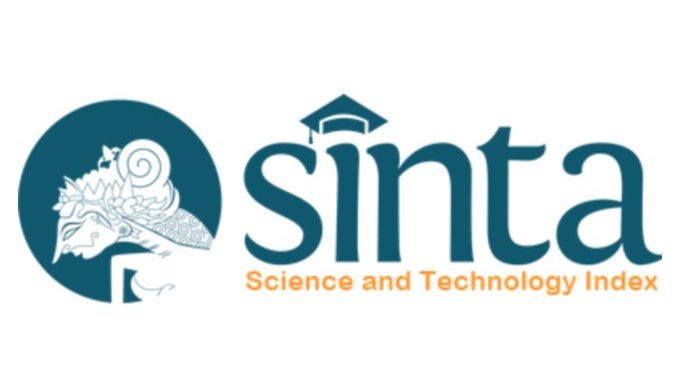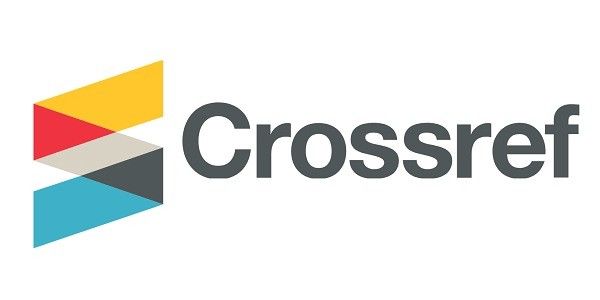Terapi Topikal Kombinasi Krim Asam Traneksamat- 3%, Nikotinamid 3%, dan Microneedling pada Melasma (Pilot Study)
DOI:
https://doi.org/10.55175/cdk.v48i3.51Kata Kunci:
Asam traneksamat, microneedling, nikotinamid, melasmaAbstrak
Latar belakang: Melasma adalah hiperpigmentasi wajah pada wanita di area yang sering terpapar sinar matahari, bersifat kronik kambuhan. Saat ini formula Kligman masih menjadi pilihan terapi efektif tetapi mempunyai efek samping terutama pada pemakaian jangka lama. Kombinasi terapi asam traneksamat, nikotinamid, dan microneedling merupakan terapi alternatif yang aman dan efektif untuk jangka lama. Tujuan: Untuk mengetahui keberhasilan terapi kombinasi topikal krim asam traneksamat 3%, nikotinamid 3%, dan microneedling dalam menurunkan skor MASI dan indeks melanin pasien melasma. Kasus: Dua pasien perempuan umur 45 dan 44 tahun dengan keluhan utama bercak hitam di wajah. Pasien 1 dengan melasma tipe campuran dan pasien 2 dengan melasma tipe epidermal. Pasien diterapi topikal menggunakan krim kombinasi asam traneksamat 3% dan nikotinamid 3% dengan microneedling. Microneedling dilakukan pada minggu ke-0, ke-4, dan ke-8. Evaluasi terapi saat minggu ke-0, 4, 8, dan 12, dengan skor MASI dan indeks melanin menggunakan Mexameter®. Hasil: Terdapat penurunan nilai skor MASI dan indeks melanin. Simpulan: Terapi kombinasi krim asam traneksamat 3%, nikotinamid 3%, dan microneedling dapat menurunkan skor MASI dan indeks melanin.
Background:Melasma is chronic and recurrent facial hyperpigmentation common in women and in areas frequently exposed to sunlight. Kligman formula therapy is still the effective treatment but has several side effects especially in long-term use. Combination of tranexamic acid, nicotinamide, and microneedling is a safe and effective alternative for the long term therapy.Objective: To measure the effectiveness of topical combination therapy of 3% tranexamic acid cream, nicotinamide 3%, and microneedling in reducing MASI score and melanin index in melasma patients. Cases: Two females aged 45 and 44 years with facial black spots. First patient diagnosed as mixed type melasma and 2nd patient with epidermal type melasma. Patients were treated with topical combination of 3% tranexamic acid and 3% nicotinamide cream with microneedling. Microneedling were done in the 0th, 4th, and 8th weeks. Evaluation and measurement was done at weeks 0, 4, 8, and 12, with MASI scores and melanin index using Mexameter®. Results: There was a decrease in MASI score and melanin index. Conclusion: Combination therapy of tranexamic acid cream 3%, nicotinamide 3%, and microneedling could reduce MASI score and melanin index.
Unduhan
Referensi
Anwar AI, Zainudin F, Miranti A. Melasma. 1st Ed. Makasar: Percetakan 21; 2016.
Bagherani N, Gianfaldoni S, SmollerB. An overview on melasma. J Pigment Disord. 2015;2(10):1-18.
Handel AC, Miot LDB, Miot HA. Melasma: A clinical and epidemiological review. An Bras Dermatol. 2014;89(5):771-82.
Wasiatmaja S. Pigmentasi kulit. In: Wasiatmaja S, editor. Dermatologi kosmetik: Penuntun ilmu kosmetik medik. 2nd Ed. Jakarta: Penerbit Universitas Indonesia; 2012 .p. 231.
Oluwatobi, Elbuluk N, Ogbechie-godec. Melasma : An up-to-date comprehensive review. Dermatol Ther. 2017;7(3):305-18.
Shankar K, Godse K, Aurangabadkar S, Lahiri K, Mysore V. Evidence-based treatment for melasma: Expert opinion and a review. Dermatol Ther. 2014;4:165-86.
Ebrahimi B, Naeini F. Topical tranexamic acid as a promising treatment for melasma. J Res Med Sci. 2014;(8):753-7.
Chan R, Park KC, Lee MH, Lee ES, Chang SE, Leow YH, et al. A randomized controlled trial of the efficacy and safety of a fixed triple combination (fluocinolone acetonide 0,01%, hydroquinone 4%, tretinoin 0,05%) compared with hydroquinone 4% cream in Asian patients with mode. Br J Dermatol. 2008;159:697-703.
Budamakuntla L, Loganathan E, Suresh DH, Shanmugam S, Suryanarayan S, Dongare A, et al. A randomised, open-label, comparative study of tranexamic acid microinjections and tranexamic acid with microneedling in patients with melasma. J Cutan Aesthet Surg. 2019;6(3):139-43.
Navarrete-sol J, Castanedo-c JP, Alvarez BT, Oros-ovolle C, Fuentes-Ahumada C, Gonzalez FJ, et al. A double-blind, randomized clinical trial of niacinamide 4% versus hydroquinone 4% in the treatment of melasma. Dermatology Res Parctice. 2011;2011:379173.
Rosmala DS. Perbandingan efektivitas kombinasi asam traneksamat 3% dan nikotinamid 3% dalam menurunkan indeks melanin pada pasien melasma [Thesis]. Surakarta: Universitas Sebelas Maret; 2019 .p. 1-109.
Wu S, Shi H, Wu H, Yan S, Guo J, Sun Y, et al. Treatment of melasma with oral administration of tranexamic acid. Aesth Plast Surg. 2012;36:964-70.
Kim SJ, Park J, Shibata T, Fujiwara R, Kang HY. Efficacy and possible mechanisms of topical tranexamic acid in melasma. Clin Exp Dermatol. 2016;41:480-5.
Steiner D, Feola C, Bialeski N, Steiner D. Study evaluating the efficacy of topical and injected tranexamic acid in treatment of melasma. 2009;1(4):174-7.
Ebanks J, Wickett R, Boissy RE. Mechanisms regulating skin pigmentation : The rise and fall of complexion coloration. Int J Mol Sci. 2009;10:4066-87.
Hakozaki T, Minwalla L, Zhuang J, Chhoa M, Matsubara A, Miyamoto K, et al. The effect of niacinamide on reducing cutaneous pigmentation and suppression of melanosome transfer. Br J Dermatol. 2002;1:20-31.
Lee DH, Oh IY, Koo KT, Suk JM, Jung SW, Park JO, et al. Reduction in facial hyperpigmentation after treatment with a combination of topical niacinamide and tranexamic acid: A randomized, double-blind, vehicle-controlled trial. Ski Res Technol. 2014;20(2):208-12.
Lima EVA, Mariana Modesto, Paixão MP, Miot HA. Assessment of the effects of skin microneedling as adjuvant therapy for facial melasma : A pilot study. BMC Dermatol. 2017;17(14):1-6.
Sivamani RK, Liepmann D, Howard I Maibach. Microneedles and transdermal applications. Expert Opin Drug Deliv. 2007;4(1):19-25.
Vasconcelos E, Andrade M, Takano D. Microneedling: Experimental study and classification of the resulting injury. Surg Cosmet Dermatol. 2013;5(2):110-4.
Alster TS, Graham PM. Microneedling: A review and practical guide. Dermatol Surg. 2017;0:1-8.
Wang Y, Viennet C, Sophie Robinb, Berthonc JY, Hed L, Humberta P. Precise role of dermal fibroblasts on melanocyte pigmentation. J Dermatol Sci. 2017;88:159-66.
Christie AR. Microneedling and melasma: Delivering successful patient solutions. J Aesthetic Nurs. 2017;6(7):334-40.
Lima EDA. Microneedling in facial recalcitrant melasma: An Bras Dermatol. 2015;90(6):919-21.
George A, Chitatumukku P, Trivandrum. Tranexamic acid: An emerging depigmenting agent. Pigment Int. 2016;3(2):66-71.
Rajeswary B, Sowmya C, Suryaprakash Reddy C, Priyanka P, Chandana S. An overview on hydrogels. Int J Pharm Technol. 2016;8(2):3978-90.
Rai T. Role of tranexamic acid in management of melasma. J Cosmetol. 2017;1(1):1-5.
Unduhan
Diterbitkan
Cara Mengutip
Terbitan
Bagian
Lisensi
Hak Cipta (c) 2021 Cermin Dunia Kedokteran

Artikel ini berlisensi Creative Commons Attribution-NonCommercial 4.0 International License.





















